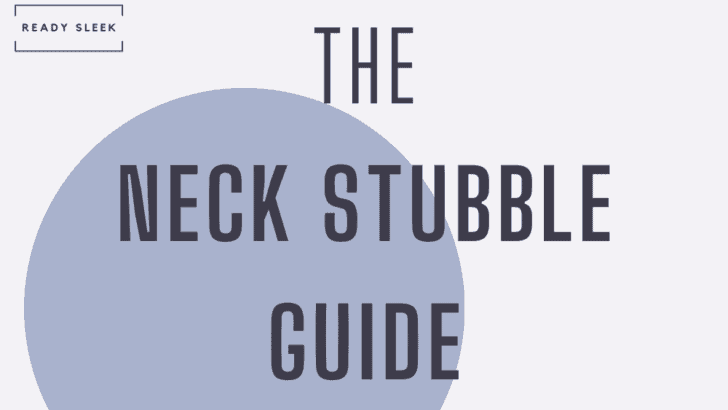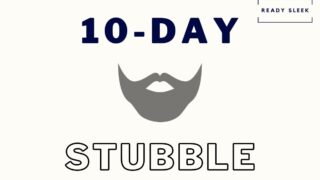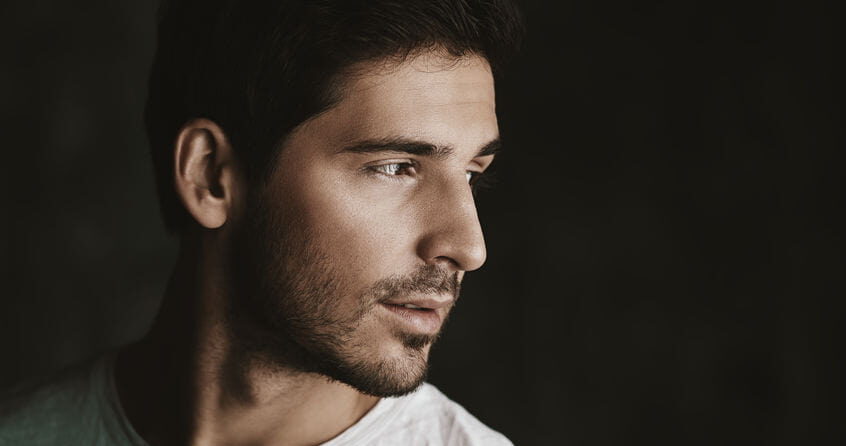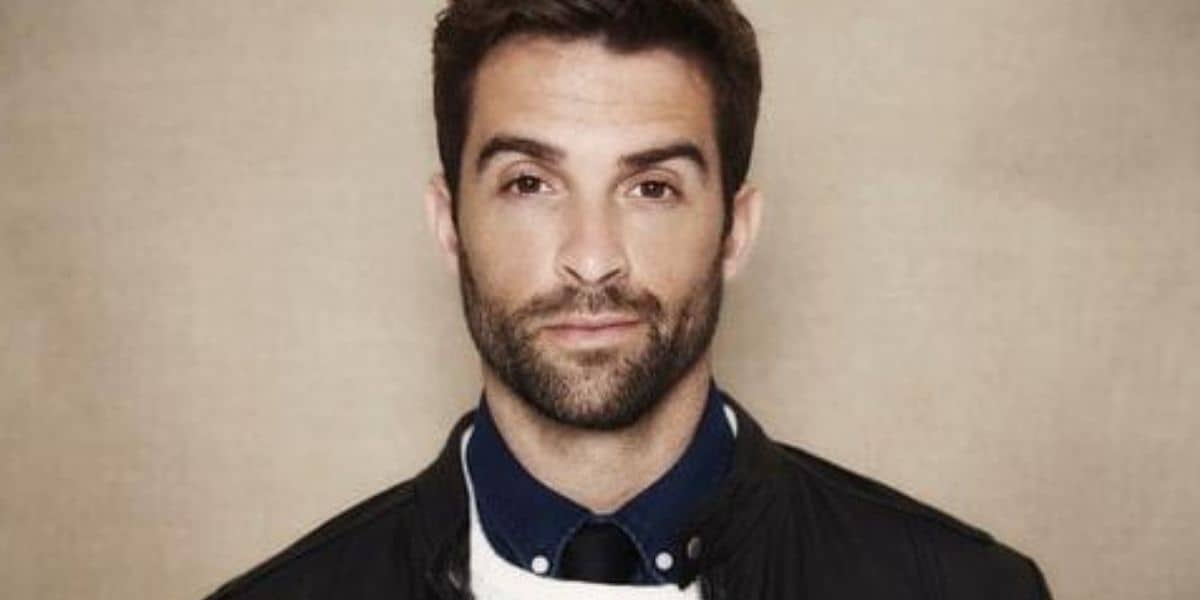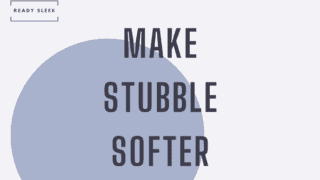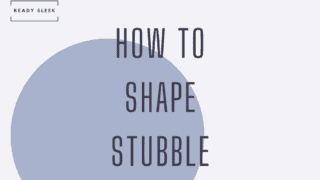Neck stubble is exactly what it says on the tin. It’s that layer of fur that forms beneath the chin and across the neck.
Stubble in this area is looked upon with less admiration than stubble on the face. It notoriously gives off an unkempt and shabby appearance that’s best avoided.
Why is neck stubble itchy?
Neck stubble can often feel itchier than stubble elsewhere within your beard. This is mainly because of where it’s situated.
It lies beneath the chin and within the neck crease, and so it’s constantly rubbing against skin.
This friction, coupled with clamminess and sweat can lead to itch.
What is a stubble beard “neckline”?
A well-groomed beard should have a well-defined neckline. The neckline is simply the border between your beard and your neck skin.
Crafting a sharp, yet natural-looking neckline is one of the core pillars of competent beard grooming.
Put simply, what you’ll learn in the tutorial to come is how to visualize and then trim the ideal neckline.
After that, how to shave all the neck stubble beneath this neckline to keep your beard looking extremely intentional and not incidental.
The neckline can also provide great definition to the jawline.
Although the neckline is easy to trim, it’s quite difficult to master. If it’s too low, it defeats the purpose and doesn’t accentuate the jawline as much as we’d like.
If it’s too high, it can look very unusual. A neckline that’s above the jawline and creeping onto the face can look very immature. In fact, it can cause a jarring double-chin look that’s objectively unattractive.
Don’t worry. This won’t happen to you. You’re about to learn exactly what’s necessary to trim the perfect neckline and shave the neck stubble underneath like a pro.
How to trim and shave neck stubble to perfection
Follow this routine step-by-step. It’s something that you’ll get better and quicker at over time with repeated attempts.
Don’t worry if you don’t get it completely correct straight away. Immaculate results are worth working towards, just like everything else in beard grooming.
Step 1: Trim the entire beard
We won’t go into the specifics of how to do this because we have plenty of other tutorials showing you how to. For example, this one here.
But the core concept is to trim down your entire beard to your optimal length before tackling the neck stubble.
This is because you want a good idea of what your stubble beard will look like before you start outlining the borders and shaving outside them.
The same goes for the cheek line.
The neckline should be defined after you trim everything down.
You can choose light, medium, or heavy stubble. You may even want to go for a short beard. The options are endless.
Once you’ve done this, it’s time to focus your attention on the task at hand. The neck stubble.
Step 2: Find and trim your perfect neckline
As I mentioned earlier, a neckline shouldn’t be too high or too low. It should wrap nicely underneath the jaw, accentuating the jawline without looking too unnatural.
Follow these steps and you won’t go wrong.
1. Tilt your head up to see your whole neck in the mirror. Analyze the breadth of your neck stubble. See how far it extends downwards and to the sides.
2. Then, find your Adam’s apple. It’s the lump around halfway down the neck.
3. Place your second and third fingers horizontally above the Adam’s apple. The point immediately above the top finger will be “two finger-widths” above the Adam’s apple. This point marks the lowest point of the neckline.
4. Now, visualize a U-shaped curve running from earlobe to earlobe, passing through this point you just marked out. The curve should slant upwards in each direction, allowing it to follow the angle of the jaw. It should still resemble a “U-shape” more than a “V-shape”, however. In other words, keep it looking natural and not too angular.
5. Time to trim. Using the naked blade of your electric trimmer, outline the neckline you just marked out first. Then, trim everything underneath it using the same blade.
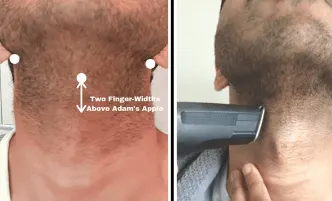
Step 3: Shave the neck stubble underneath the neckline
It’s time to really give things a crisp and sharp look. Using your shaving device of choice (electric shaver or manual razor), everything beneath the neckline you just outlined will be shaved.
Sure, some men do choose to just stop after the last step. They’ve technically already removed the neck stubble using the naked blade of the trimmer. This looks OK.
Ready Sleek founder. Obsessed with casual style and the minimalist approach to building a highly functional wardrobe. Also a fan of classic, vintage hairstyles.

